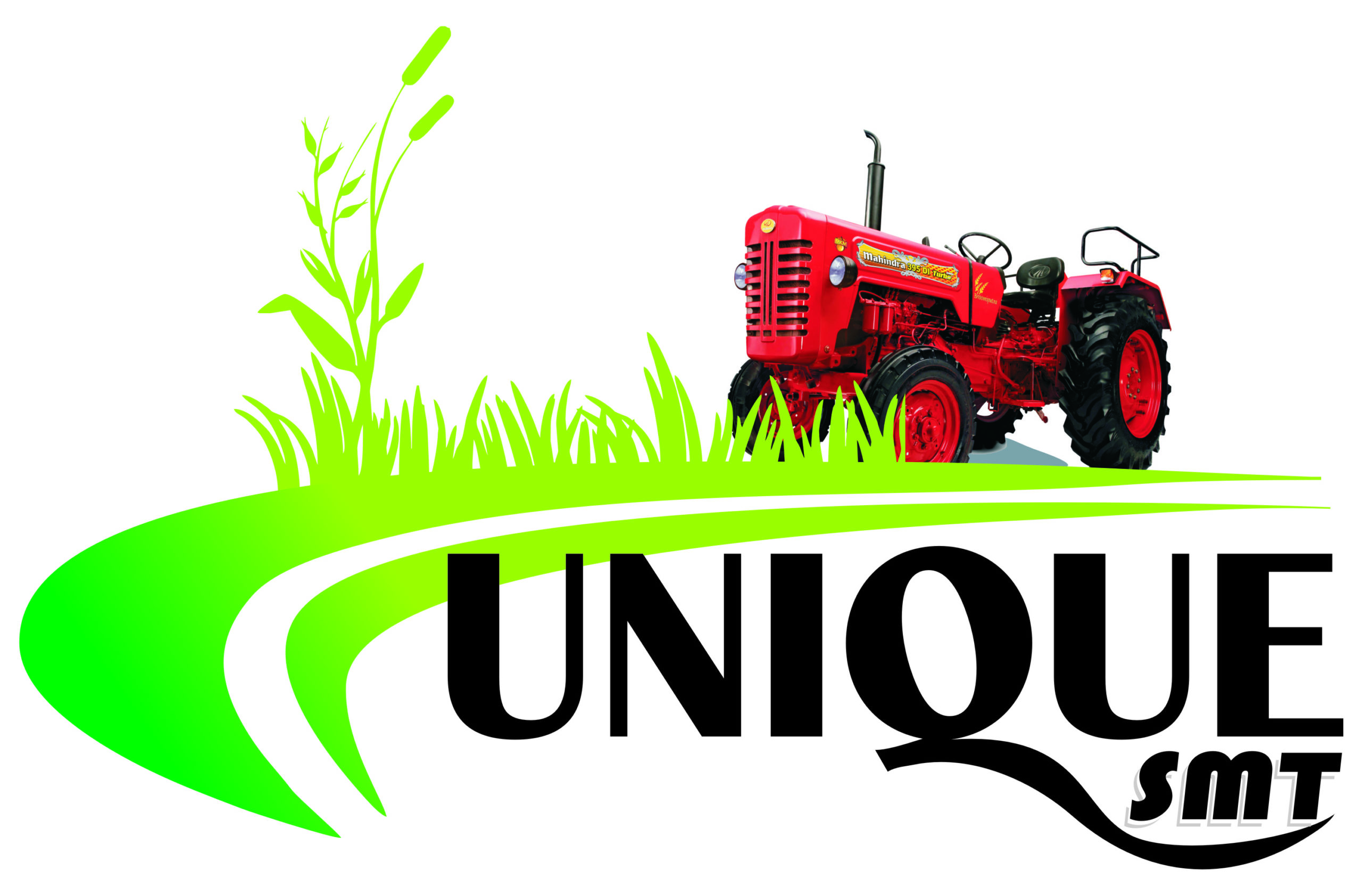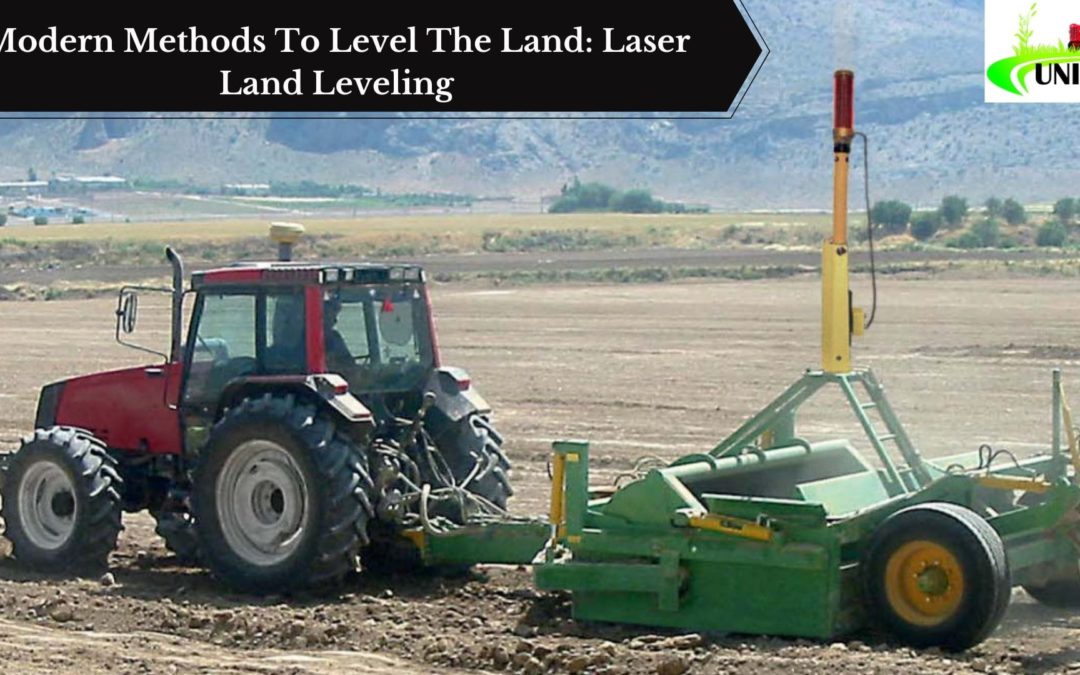Contents
Laser land leveling system is the best option for improving water efficiency by minimizing water application losses.
Land leveling is obligatory for taking up good agronomic, soil management practices. This saves irrigation water, facilitates field operations and increases yield and quality. Leveled land helps in mechanization of various field operations. Land leveling may be carried out to produce a level land without any slope, example, in case of rice farming, a slope may be given in one direction or two perpendicular directions. There are different methods to level fields which provide agricultural and financial benefits. The irregular land level within a field has a major effect on crop management and crop yields. Unevenness in land results in uneven water coverage, it also results in uneven crop stands, increased weeds and uneven maturing crops. All these factors result in reduced yields and reduced grain quality. Land leveling improves crop establishment, it also reduce the amount of effort required to manage the crops, and it also increases both grain quality and yields.
WHAT DO YOU UNDERSTAND BY LASER LAND LEVELING?
Laser land leveling is a process of flattening the land surface from it’s average elevation, using laser equipped drag buckets. This whole process uses large horsepower tractors and soil movers that are equipped with GPS or laser guided instrumentation so that the soil can be moved either by cutting or filling to create the desired level. This technique is also known for getting higher accuracy in land leveling and offers great potential for water savings and higher grain yields.
BENEFITS:
- Reduces labour requirement for irrigation.
- Saves irrigation water.
- Decreases the time to complete tasks.
- More leveled and smooth soil surface.
- Provides uniform distribution of water in the field.
- Improves the condition of field.
- Reduction of seeds rates, chemicals and fuels used in cultural co-operation.
- Reduces weed problems.
- It is effective and gives less load on operator.
LIMITATIONS:
- Laser land levelling cost is high.
- It needs a skilled or trained operator.
TYPES OF LASER LAND LEVELERS
1. Manual leveling lasers:
They rely on tubular bubbles for leveling. The user needs to level the laser in both the X-axis and Y-axis and rely on the bubbles for accuracy. They’ve maximum accuracy of 1 cm at 100m.
2. Semi self- leveling lasers :
They adjust themselves within a range, using a compensator. These lasers have high accuracy and they also have a shut-off feature, if the laser is bumped or goes out of the self-leveling horizon. They attain accuracy of at least 1 cm at 100 m.
3. Fully self-leveling lasers :
They automatically find and maintain level within a specified range. These lasers are equipped with servomotors. They are the easiest to use and attain accuracy up to 2.5 mm at 100 m.
4.Split-beam lasers :
These lasers emit horizontal and vertical beams at the same point of time.
COMPONENTS OF LASER LEVEL:
The laser land leveler equipment includes laser emitter, laser receiver, two way hydraulic valve, laser eye, grade rod, tri pod stand, control box on tractor and scraper unit. Outline of the equipments is given below:
Laser Emitter:
The laser emitter unit sends continuous self leveled beam signal with laser reference up to a command radius (depending upon it’s range).The laser emitter is mounted on a tripod stand placed just outside the sector to be laser levelled and high enough to possess unobstructed laser beam.
Laser Beam Receiver:
The laser receiver mounted on the scraper may be a unidirectional receiver that detects the position of the laser reference plane and transmits it to the control box mounted on the tractor.
Control Box:
The control box is to be mounted on the tractor in order that the operator can easily access the switches and consider the indicator lamps. The control box has the most control unit for actuating the double acting hydraulic valves .The three control box switches are On/Off, Auto/Manual, and Manual Raise/Lower.
Hydraulic Valve Assembly:
The valve assembly regulates the flow of tractor hydraulic oil, to the hydraulic cylinder to boost and lower the scraper blade. The oil supplied by the tractor’s hydraulic pump is generally delivered at 2000-3000 psi pressure.
Laser Eye:
It is mounted on the grade survey rod for obtaining the extent of the sector. It contains a laser receiving panel.
STEPS IN LASER LAND LEVELING:
- Ploughing of field: It should start from the center outwards. It is best to plough the field when the soil is slightly moist.
- Topographic survey: After ploughing , we will conduct topographical surveys, to record the high and low spots in the field. Then adjust the individual positioning of the tripod legs until the base plate is level. Attach the laser transmitter to the base plate.
Laser leveling of field: Adjust the average elevation value of the area in the control box. The laser controlled bucket should be positioned at a specific point that shows the mean height of the field. The cutting blade should be set a bit above ground level. At last the field should then be re-surveyed to make sure that the desired level of precision has been attained.
CONCLUSION:
Laser land leveling is a recent resource-conservation technology initiative in India. The results are quite encouraging. It can change the way food is produced by enhancing resource-use efficiency of critical inputs, without any disturbing and harmful effects on the productive resilience of the ecosystem.

